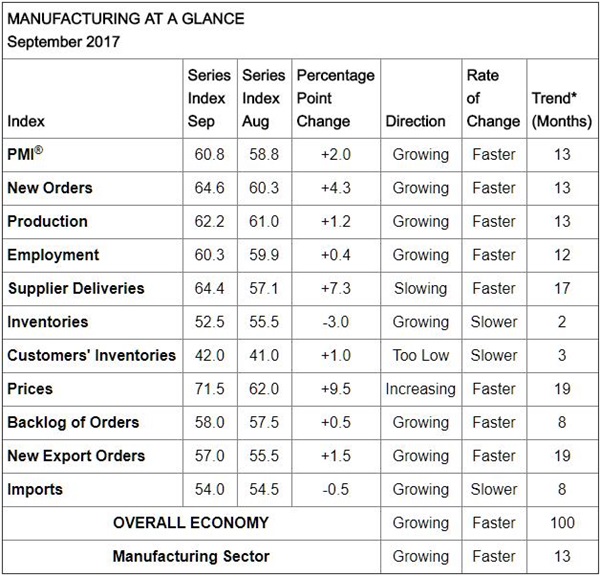 The Wall Street Economist
The Wall Street Economist
Dr. Edmond J. Seifried
In February 1982, the U.S. Department of Commerce joined forces with the Institute of Supply Management (ISM) to develop a new economic indicator called the Purchasing Managers’ Index, or PMI®.
The index is based on monthly survey data compiled from purchasing and supply executives nationwide. The monthly survey questions some 400 firms regarding the status of 10 individual components of the health of their business. The 10 components are: new orders, backlog of orders, new export orders, imports, production, supplier deliveries, inventories, customers' inventories, employment and prices.
The survey reflects the change, if any, in the current month compared to the previous month of each component. The original PMI® calculated the health of the U.S. manufacturing industry by combining four components of the ISM’s monthly survey of businesses. The four components were: new orders, production, employment, and supplier deliveries. The current PMI® adds a fifth component: inventories.
Historical data show a close parallel between growth in real Gross Domestic Product and the PMI®. The index can explain about 60 percent of the annual variation in GDP, with a margin of error that averaged ± 0.48 percent during the last ten years. According to the ISM, “….a PMI® reading above 50 percent indicates that the manufacturing economy is generally expanding; below 50 percent indicates that it is generally declining. A PMI® above 43.3 percent, over a period of time, indicates that the overall economy, or gross domestic product (GDP), is generally expanding; below 43.3 percent, it is generally declining. The distance from 50 percent or 43.3 percent is indicative of the strength of the expansion or decline.”
The table below shows the most recent survey results.

Source: September 2017 Manufacturing ISM Report on Business, Institute of Supply Management.
Notice the current PMI® stands at 60.8 percent, well above the 43.3 percent mark which indicates an expanding economy. GDP growth rate results for 2017 have been mixed with first quarter growth of a meager 1.2%, followed by a more robust 3.1% in the second quarter. Forecasts for the third quarter are all over the map, as analysts struggle to gauge the impact of the hurricanes that have pummeled the nation. But if the PMI® does in fact closely parallel the nation’s GDP, our upcoming economic growth looks promising.
Stay up to date
Receive email notifications about Northwest and global and agricultural and economic perspectives, trends, programs, events, webinars and articles.
Subscribe